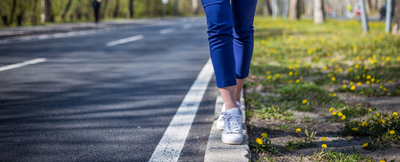
Importance of Maintaining Balance As You Age
But it’s essential to work on balance at any age. Balance and strength go hand in hand. This means strength-building exercises improve balance, and working toward balance can improve our strength.
What is Balance, and Why Is It Important?
Balance is the ability to move without falling. Balance keeps you upright when walking and standing — and is the primary way you navigate the world. Balance works when your body sends Information from the inner ear, other senses, and the skeletal, muscular system. This information tells the brain how the body is positioned within a given environment.
According to the CDC, falls are the leading cause of injury in patients over age 65. Injuries can be minor, but they can also be severe such as breaks and traumatic brain injuries.
One of the best things you can do to improve balance and prevent falls is exercise. You can schedule balance work as part of your daily workout routine or work on it independently. Here’s what we recommend.
Exercise to Improve Balance
Daily exercise helps maintain strength, prevent muscle loss, and improves balance. Even a short walk in the evening before bed can help you maintain balance as you age. However, weekly balance and strength activities can significantly decrease your risk of falls or injury.
You can enjoy a variety of activities that help improve coordination and balance. These include biking, swimming, climbing, yoga, and tennis, to name a few. We also recommend adding daily balance exercises like the following:
- TIGHTROPE WALK
In a standing position, stay close to a wall if you need to place your hand on it for stability. We recommend doing this down a hallway. Then, start walking forward slowly, with your feet moving heel to toe as if you’re on a tightrope.
Try to maintain a straight line while looking ahead (don’t look at your feet).
As you become better, you can try not to hold the wall. - SIDE STEP
Stand with your feet together, and keep your knees slightly bent. You can place one hand against the wall to support your balance.
Slowly step to the side with one foot, and then bring the other foot to join.
Continue sidestepping for ten to 15 steps in each direction.
As you become better at this exercise, try doing this without the wall support. - ONE LEG STAND
Stand facing a wall with your feet shoulder-width apart. Place both hands on the wall as needed for support.
Slowly raise one leg, and hold for a count of ten. Return your leg to the starting position on the floor.
Repeat with the other leg. As you improve your balance with the exercise, try it without touching the wall.
As your balance improves, you can try this exercise with your eyes closed.
As always, safety is your priority. If you experience balance issues, have someone nearby to help prevent falls.
Article Provided By Our Partners at JOYLUX

 PODCAST LISTEN LIVE
PODCAST LISTEN LIVE





